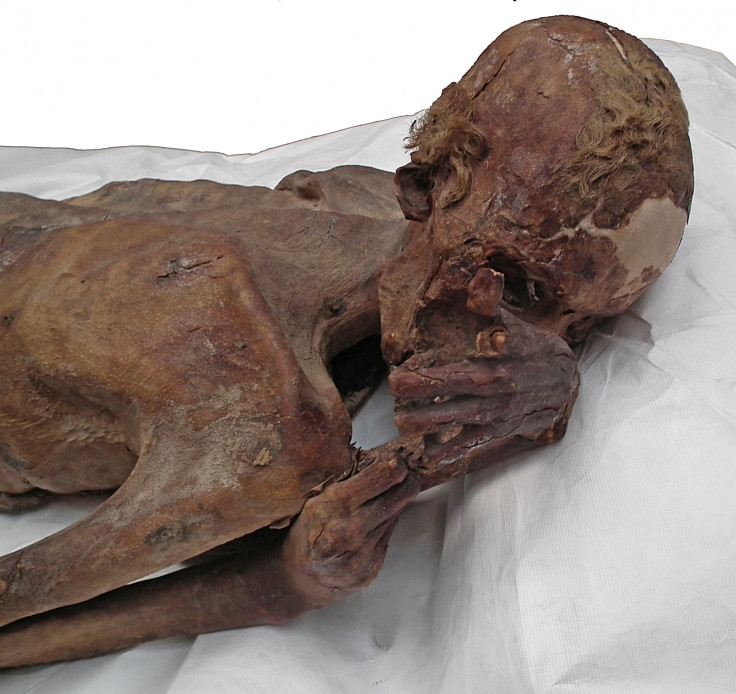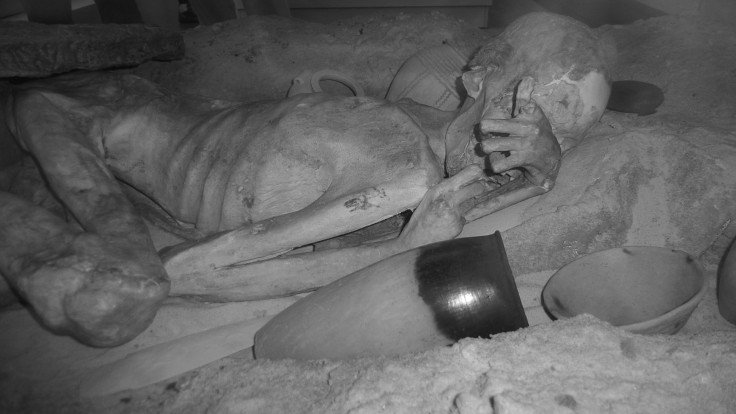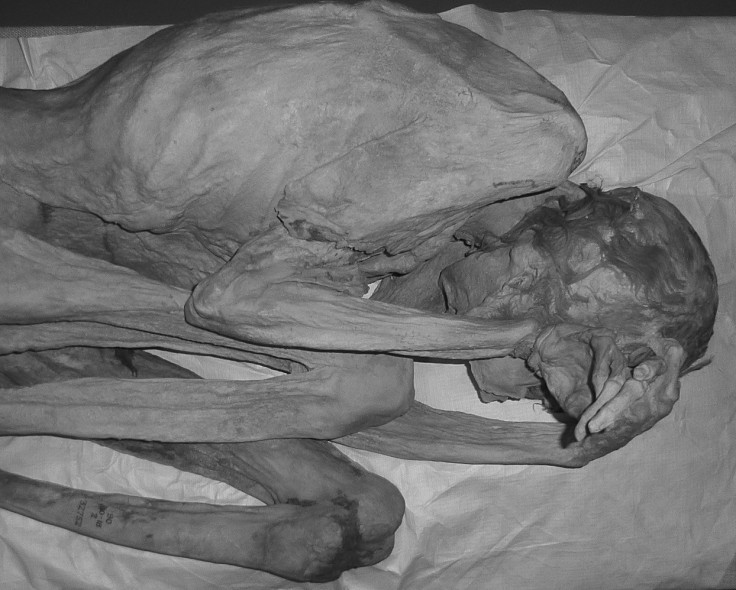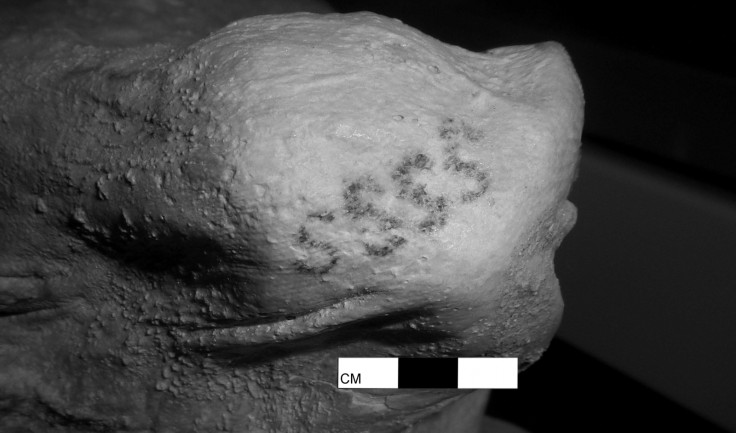World's earliest figurative tattoos discovered on 5,000-year-old ancient Egyptian mummies
Infrared photos were used to identify the tattoos on two mummies at the British Museum.

Ancient Egyptians were getting inked much earlier than scientists first presumed. A new study of two 5,000-year-old mummies claims to have found proof of the world's oldest figurative tattoos.
According to the research, which was published in the Journal of Archaeological Science, the art work was discovered on the bodies of the two naturally mummified individuals housed at the British Museum. Known as the Gebelein mummies (based on the region in which they were found), the remains of the male featured tattoos of a wild bull and a Barbary sheep on the upper-arm. The female mummy had S-shaped motifs on her fore-arm and shoulder — the earliest tattoos ever found on a female body.
Both remains were part of a collection of six mummies discovered in 1900. They date back to a time between 3351 and 3017 BC.
"The use of the latest scientific methods, including CT scanning, radiocarbon dating and infrared imaging, has transformed our understanding of the Gebelein mummies," Daniel Antoine, one of the lead authors of the research paper and the British Museum's Curator of Physical Anthropology said. "Only now are we gaining new insights into the lives of these remarkably preserved individuals. Incredibly, at over five thousand years of age, they push back the evidence for tattooing in Africa by a millennium."
Previous CT scans showed that Gebelein Man A was between 18 and 21 years of age when he died from a stab wound to the back. At the time the dark smudges on his arm remained unexamined since they came across as simple smudges under natural lighting.
Using infrared photography scientists were able to determine that the marks were in fact tattoos of slightly overlapping horned animals which have been tentatively identified as a wild bull (long tail, elaborate horns) and a Barbary sheep (curving horns, humped shoulder) which were well known in Predynastic Egyptian art.

Researchers believe that the tattoos were created using some kind of soot and may have been worn as a symbol of power or strength.
In comparison, the marks of Gebelein Woman are harder to understand. 'S' shaped motifs over her right shoulder and the linear motif on her right arm are similar to objects held by figures participating in ceremonial activities on the painted ceramics of the period.

The study states that they may represent a crooked stave, a symbol of power and status, or a throw-stick or batons and/or clappers used in ritual dance.
Considering the location of both sets of tattoos, they may have been meant to denote status, bravery, cult/magical knowledge or protection.

Prior to this discovery, the oldest surviving examples of tattoos were identified on the Alpine mummy known as Ötzi, dating back to about 3370 BC. His designs, however, were geometric in style unlike the ancient Egyptians' figurative ones.






















